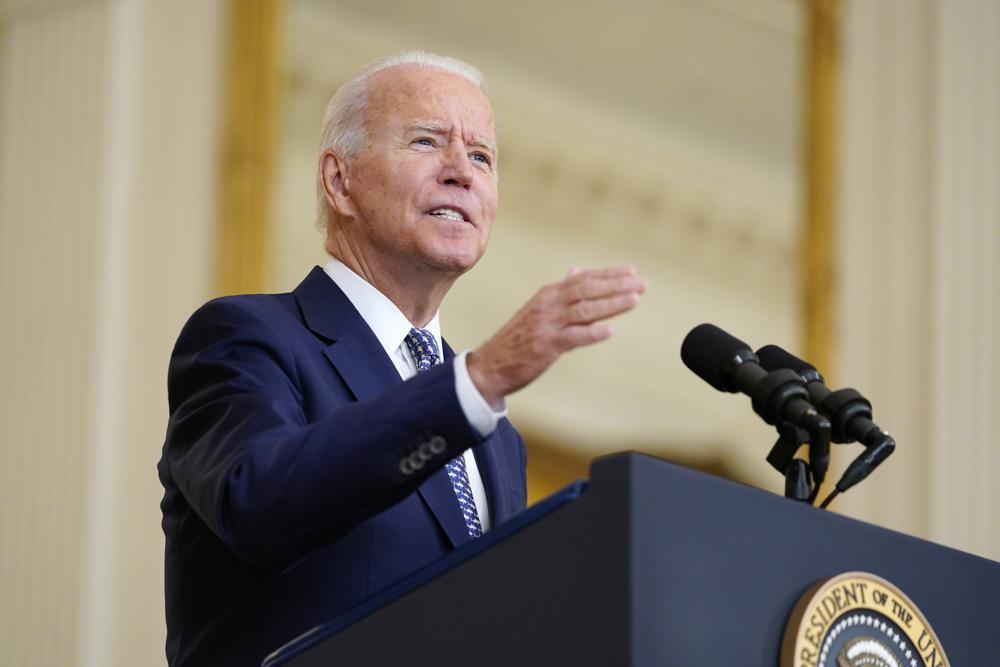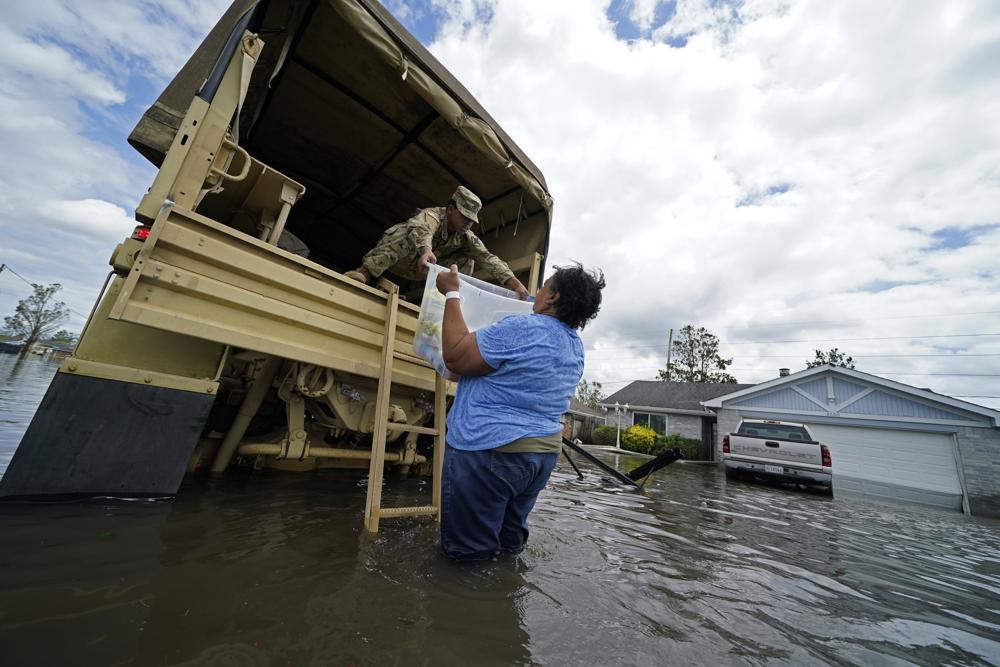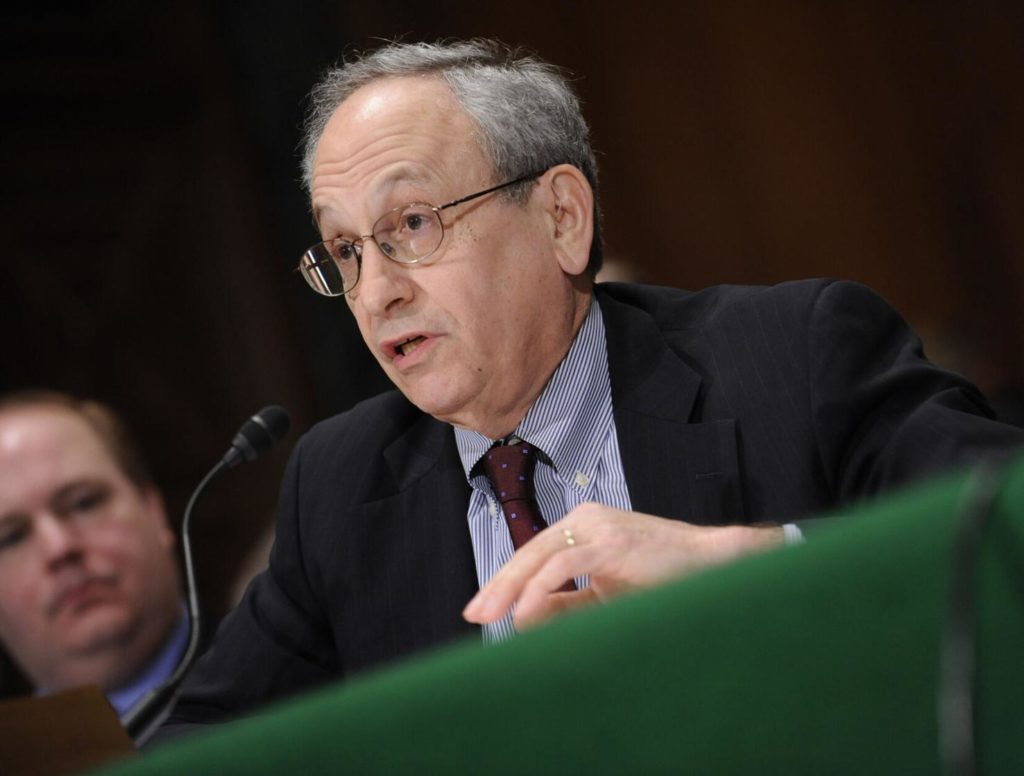Alabama congressmen join legislation to honor service members who died in Afghanistan

Congressman Jerry Carl, Gary Palmer, and Mo Brooks joined 158 Members of Congress in introducing legislation to posthumously award the Congressional Gold Medal to the 13 U.S. military service members who were killed in Afghanistan. Michigan congresswoman Lisa McClain introduced the legislation. Two suicide bombers and gunmen attacked the crowds flocking to Kabul’s airport last Thursday, killing at least 60 Afghans and 13 U.S. troops. The legislation will award the Congressional Gold Medal to Staff Sgt. Darin Taylor Hoover, Sgt. Johanny Rosario Pichardo, Sgt. Nicole Gee, Cpl. Hunter Lopez, Cpl. Daegan Page, Cpl. Humberto Sanchez, Cpl. David Lee Espinoza, Lance Cpl. Jared Schmitz, Lance Cpl. Rylee McCollum, Lance Cpl. Dylan Merola, Lance Cpl. Kareem Nikoui, Hospitalman Maxton Soviak, and Staff Sgt. Ryan Knauss. Rep. Carl stated on Twitter, “I’m a proud cosponsor of this bipartisan legislation. The world is a better, safer place because of our servicemembers who have served in Afghanistan. May we never forget their sacrifices to fight terrorism and protect America.” Palmer commented, “Honored to cosponsor @RepLisaMcClain’s bill to recognize the sacrifices of the brave US service members who gave their lives in #Afghanistan last week. Their courage will be remembered.” “These heroic men and women are gone far too soon, and we must honor them for their bravery in helping U.S. citizens, and Afghan allies safely evacuate Afghanistan,” said Rep. McClain. “My heart aches for the families and loved ones of our service members. We will always remember their service and pay tribute to their sacrifice.”
Members of Congress call on Joe Biden to resign, calling him ‘unfit’

Alabama legislators have continued to call on President Joe Biden’s resignation following the recent events in Afghanistan. Last week, suicide bombers and gunmen attacked Kabul airport killing 60 Afghans and 13 U.S. troops. The Islamic State group claimed responsibility for the killings. Critics blame Biden and a lack of leadership for the chaos that occurred at the end of a planned evacuation of Afghanistan. Former President Donald Trump earlier agreed in negotiations with the Taliban to end the war in May. However, Biden waited until the Taliban had swept to power this month, following the collapse of the U.S.-backed government and its army, to begin executing an airlift, reported the Associated Press. Rep. Jerry Carl cosponsored a resolution calling for Biden’s resignation. The resolution was introduced by Clay Higgins. Carl stated, “President Biden’s leadership failures have directly resulted in 13 U.S. servicemembers being killed at the hands of brutal terrorists, Americans being stranded abroad, our nation’s reputation being humiliated on the world stage, and the Taliban seizing billions of dollars of U.S. military equipment. A majority of Americans no longer have confidence in the President’s ability to lead our nation and serve as our Commander in Chief. President Biden must resign immediately.” Last week, Rep. Mo Brooks called for Biden’s resignation stating, “President Joe Biden had an obligation to safely and securely remove American assets and citizens from Afghanistan. Instead, Biden left the Taliban and terrorist entities with inordinate control over American lives, American military equipment, and American military personnel, thereby putting them all at risk.” On Twitter Brooks wrote, “President Joe Biden has failed as Commander-In-Chief. President Biden is unable to meet the challenges of a President of the United States. He is mentally unfit to hold the Presidency.” Today, Rep. Barry Moore released a statement calling for President Joe Biden to resign. “Today is a painfully dark day in our nation’s history, and we are all experiencing a whirlwind of emotions as we helplessly watch the deadly situation in Afghanistan continue to deteriorate. I ask all Americans to join me in praying for our countrymen and allies still trapped on the ground in Afghanistan. The United States has been delivered through many crises in our history, and I believe we will be again. “Unfortunately, President Biden’s stubborn refusal to take accountability for this deadly crisis and his inexplicably cavalier attitude toward this low point in American history gives me no confidence that this Administration possesses the leadership or priorities necessary to salvage this disastrous retreat and rescue either our stranded Americans or global reputation. It is abundantly and agonizingly clear that drastic changes are needed throughout this Administration – beginning at the top. President Biden must acknowledge that he is not up to the task of serving as Commander-in-Chief of the greatest country in the free world, and he must step aside and allow new leadership to guide the United States through these perilous times.”
COVID recession pushed Social Security insolvency up a year

The sharp shock of the coronavirus recession pushed Social Security a year closer to insolvency but left Medicare’s exhaustion date unchanged, the government reported Tuesday in a counterintuitive assessment that deepens the uncertainty around the nation’s bedrock retirement programs. The new projections in the annual Social Security and Medicare trustees reports indicate that Social Security’s massive trust fund will be unable to pay full benefits in 2034 instead of last year’s estimated exhaustion date of 2035. For the first time in 39 years, the cost of delivering benefits will exceed the program’s total income from payroll tax collections and interest during this year. From here on, Social Security will be tapping its savings to pay full benefits. The depletion date for Medicare’s trust fund for inpatient care remained unchanged from last year, estimated in 2026. In the 1980s, financial warnings about Social Security prompted then-President Ronald Reagan and lawmakers of both parties in Congress to collaborate on a long-term solvency plan, but such action is unlikely in today’s bitter political climate. Democrats who control the White House and Congress offered assurances they would protect both programs. “The Biden-Harris administration is committed to safeguarding these programs and ensuring they continue to deliver economic security and health care to older Americans,” Treasury Secretary Janet Yellen said in a statement. The latest estimates reflected the push and pull of many factors flowing from the pandemic, and the full impact may take years to sort out. The deep but relatively short recession slashed revenue from payroll taxes. But the death toll from COVID-19, concentrated among older people, reduced future Social Security benefit payouts. Hospitals were stressed by the influx of COVID patients, but Medicare didn’t have to pay for as many knee surgeries, colonoscopies, and other more routine procedures. Birth rates and immigration, which tend to bolster the two programs, both fell. For Social Security, the loss of payroll tax revenue outweighed any savings from what the program would have paid out to people whose lives were lost in the pandemic. The report noted that employment, earnings, interest rates, and economic growth plummeted in the second quarter of 2020 after the pandemic hit the United States. “The finances of both programs have been significantly affected by the pandemic and the recession of 2020,” the trustees said. But “given the unprecedented level of uncertainty,” there was no consensus on what the long-lasting effects of the pandemic would be. A looming question for Medicare: Will the population of beneficiaries who survived the pandemic be healthier on the whole, or will a high number suffer from new conditions like long COVID? Social Security pays benefits to more than 65 million Americans, mainly retirees but also disabled people and survivors of deceased workers. Medicare covers more than 60 million older and disabled people. Together, both programs account for more than 40% of the federal budget and act as stabilizers not only for families but for the national economy. While long-term projections are sobering, in the short run, there was some good news for Social Security recipients. Government economic experts who prepared the Social Security report estimated recent increases in inflation mean the cost-of-living adjustment for 2022 will approach 6%, a whopping jump from the 1.3% COLA awarded for this year. Some of that may go for higher Medicare costs. The Medicare “Part B” premium for outpatient coverage was projected to rise by $10 a month in 2022, to $158.50 under the report’s intermediate assumptions. The official number won’t be released until later this year. Social Security and Medicare remain under intense financial pressure with the retirement of millions of baby boomers, who are living longer than previous generations. When the Social Security trust fund is depleted, the government will be able to pay 78% of scheduled benefits, the report said. When Medicare’s trust fund for inpatient care runs short, it will be able to pay only 91% of expected costs, mainly hospital bills. Because reductions of that magnitude would cause a political uproar, it is likely that a future Congress would find ways to recover the lost benefits, either by hiking the payroll taxes paid by current workers or by increasing government borrowing to cover the shortfall. With Medicare, lawmakers could also raise premiums paid by beneficiaries. It’s unclear how the Medicare projections will affect the debate on Capitol Hill about authorizing the program to negotiate prescription drug prices and then using projected savings to provide new Medicare coverage for dental, vision, and hearing services. Republicans have argued that any savings should go to shore up the underlying program, not expand benefits. The Medicare report steered clear of making any projections about the new Alzheimer’s drug, Aduhelm, which has a list price of $55,000. Most of the 6 million Americans dealing with Alzheimer’s are covered by the program, though not all would-be candidates for the medication. The trustees’ reports, which have been delayed for months, represent the government’s effort to assess the impact of last year’s pandemic and recession on Social Security and Medicare. The U.S. economy lost a staggering 22.4 million jobs in March and April 2020 as the pandemic forced businesses to close or cut their hours, and the economy went into recession. But the recession turned out to be brief, and hiring has bounced back as economic growth has resumed. Employers have brought back 16.7 million jobs since April 2020, but that gain still leaves the labor force 5.7 million jobs below where it was before the pandemic hit. The trustees of Social Security and Medicare include the secretaries of Treasury, Health and Human Services, and Labor, as well as the Social Security commissioner. They are supposed to be joined by two “public trustees,” knowledgeable private citizens who act as the eyes and ears of taxpayers and beneficiaries. But those posts have been vacant since July 2015 — before the end of the Obama administration. And this year, there’s no Social Security commissioner either since President Joe Biden fired Andrew Saul, a holdover appointee
New Orleans levees pass Ida’s test while some suburbs flood

The levees, floodwalls, and floodgates that protect New Orleans held up against Hurricane Ida’s fury, passing their toughest test since the federal government spent billions of dollars to upgrade a system that catastrophically failed when Hurricane Katrina struck 16 years ago. But strengthening the flood protection system in New Orleans couldn’t spare some neighboring communities from Ida’s destructive storm surge. Many residents of LaPlace, a western suburb where work only recently began on a long-awaited levee project, had to be rescued from rising floodwaters. Marcie Jacob Hebert evacuated before Ida, but she has no doubt that the storm flooded her LaPlace home based on what she has seen and heard from neighbors. Her house didn’t flood in 2005 during Katrina, but it took on nearly 2 feet (60 centimeters) of water during Hurricane Isaac in 2012. “We haven’t had these problems until everybody else’s levees worked,” said Hebert, 46. “It may not be the only factor, but I sure do think it contributes.” Louisiana State University professor emeritus Craig Colten, who has taught historical geography, said most of the New Orleans levee systems have been in place for decades. He said the flooding in LaPlace can be explained by wind direction, not by any floodwater diverted from New Orleans. “Isaac was really a minor storm in terms of wind speed, but it did drive water into Lake Pontchartrain to the western edge, toward LaPlace, as this storm did. And that just is going to pile water up where LaPlace is,” Colten said. “I haven’t seen anything that was done since Katrina that’s really going to make a huge difference.” Gov. John Bel Edwards said a preliminary survey of levees across Louisiana showed they did exactly as they intended and held water out. “We don’t believe there is a single levee anywhere now that actually breached or failed. There were a few smaller levees that were overtopped to a degree for a certain period of time,” Edwards said. Two flood protection districts oversee the system in Orleans, Jefferson, and St. Bernard parishes. Neither district reported any breaches or overtopping of levees. “The system performed as designed,” said Nicholas Cali, regional director of the Southeast Louisiana Flood Protection Authority-West, which oversees the west bank of Orleans and Jefferson parishes. The Southeast Louisiana Flood Protection Authority-East, which covers St. Bernard Parish and most of Orleans and Jefferson parishes, also planned to inspect its system Monday but hadn’t found any problems, according to regional director Kelli Chandler. Tulane University history professor Andy Horowitz, author of “Katrina: A History, 1915-2015,” said it is “unequivocally great news” that the levees held up against Ida’s surge. That doesn’t mean that a city as vulnerable as New Orleans is safe from flooding “in the face of a changing climate,” he added. “It does not mean that the lesson of Hurricane Ida is that metropolitan New Orleans has adequate hurricane protection. It means it had adequate protection against this storm surge,” Horowitz said. “As the system is challenged by stronger and more frequent hurricanes. I think many experts are very concerned about the rather low level of protection that New Orleans has.” A federal judge in New Orleans ruled in 2009 that the U.S. Army Corps of Engineers’ failure to properly maintain and operate the Mississippi River-Gulf Outlet was a significant cause of the catastrophic flooding during Katrina. Levee failures near Lake Pontchartrain also flooded New Orleans neighborhoods. After Katrina, the federal government spent $14.5 billion on projects designed to enhance protection from storm surge and flooding in New Orleans and surrounding suburbs south of Lake Pontchartrain. Starting with a giant surge barrier east of the city, the system is a 130-mile (210-kilometer) ring built to hold out storm surge of about 30 feet (9 meters). Work recently began on a levee project to protect tens of thousands of residents of LaPlace and other communities outside New Orleans’ levee system. That project is not projected to be completed until 2024. “I’m glad they’re building us a levee, but I worry about what happens to the next group further to the west,” Hebert said. “The water has got to go somewhere. We can’t just keep funneling it from person to person, place to place.” Bernardo Fallas, a spokesperson for Phillips 66, said the company did not immediately have information about whether a reported levee collapse in Plaquemines Parish affected its Alliance Refinery in Belle Chasse. Fallas said the refinery has been shut down since Saturday, ahead of Ida’s arrival. “We will proceed to conduct a post-storm assessment of the refinery when it is safe to do so,” Fallas said. Republished with the permission of the Associated Press.
Steve Flowers: Donald Trump comes to Alabama

Former President Donald Trump paid a visit to the Heart of Dixie last week. Obviously, this is Trump country. Alabama was one of Trump’s best states in the 2020 Election. He got an amazing 65% of the vote in our state. If the turnout for his August 21 rally in rural Cullman County is any indication, he would get that same margin of victory this year if the election were held again. Many of those in attendance were insistent that Trump won last year’s presidential contest and that it was stolen from him. The event was held on a desolate rural north Alabama farm. It was reminiscent of the 1969 Woodstock event in rural New York. In fact, our newly minted U.S. Senator Tommy Tuberville referred to it as “Trumpstock.” Tuberville nor I either one attended Woodstock, but we are old enough to know about the legendary music and imbibing event. It was also reminiscent of some of the old George Wallace rallies in the 1960’s – only much larger. The rally drew an enormous crowd. Estimates said there were 45,000 Trumpites in attendance, and I am not an expert on estimating crowds, but I do not disagree with that number. It took me 30 minutes to walk through the crowd to get to my car. Trump is truly an entertainer, and Alabama is truly Trump Country, although there were quite a few folks in attendance from neighboring states. I was very appreciative to be given a VIP front row private reception invitation to the event. Allow me to share some of my observations. Coach/Senator Tommy Tuberville won his seat in the U.S. Senate because Trump endorsed him. It is obvious that Trump and Tuberville like each other and have bonded. Tuberville ran for and is in the Senate for the right reason. He wants to spend some of his retirement years giving back to this country. Tuberville was not groomed to be a politician. He is a football coach, but he is doing a good job representing Alabama in Washington. He has put together a good staff headed by veteran Stephen Boyd. They are doing a good job with constituent service. Tuberville looked jovial, relaxed, and dapper when he spoke prior to Trump. Lt. Governor Will Ainsworth gave a great speech. It was fiery and almost George Wallace level. He is a true conservative. He has two young sons who accompanied him to the rally. They are very gentlemanly young men who are always courteous and mannerly. Attorney General Steve Marshall gave an excellent speech. It was conversational, sincere, and well-received. Congressman Robert Aderholt was spectacular and gave a great speech and welcome. He represents Cullman in congress. His 4th Congressional District gave Trump the largest percentage votes of any congressional district in the country. Aderholt looks like a congressman. He is polished and erudite but has a grassroots appeal. His people in North Alabama love him. Mo Brooks spoke and was fiery as ever. Trump has endorsed him in the senate race. However, Trump only endorsed him once on this night. There is a lot of internal discord among the Republican Party membership. It appears that the Mo Brooks supporters have taken over the Republican Party hierarchy and that this Trump event was a Mo Brooks rally. Trump probably was asked to temper his Brooks endorsement. Indeed, Mo Brooks’s opponents, Katie Britt, Lynda Blanchard, and Jessica Taylor were all in attendance. Several state senators were there, along with the aforementioned state constitutional officers. I saw Greg Reed from Jasper, Tom Whatley from Auburn, along with hometown Cullman Senator Garlan Gudger, and PSC Commissioner Jeremy Oden, also from Cullman County. In addition, Secretary of State John Merrill and Jefferson/Shelby Congressman Gary Palmer were in attendance. It was good to see some of the old, longtime, 50 year Republican Party faithful founders there – Elbert Peters from Huntsville, Joan and Paul Reynolds from Shelby County, and Vicki and Mike Drummond from Jasper. They were laboring in the Republican vineyards before it was cool to be a Republican and still are. I had a chance to see Trump closeup. He looks amazing for 75. People age differently. He is a lot more cognizant and alert than 78-year-old Joe Biden. If you made me bet, I would say that Trump is running for President in 2024 and that he will carry Alabama. Happy Labor Day. See you next week. Steve Flowers is Alabama’s leading political columnist. His weekly column is seen in over 60 Alabama newspapers. He served 16 years in the state legislature. Steve may be reached at: www.steveflowers.us.
Former Fed official warns of imminent risk to stability of global financial system

Former Federal Reserve official Donald Kohn sounded the alarm about what he characterized as an imminent global financial crisis during a recent symposium on economic policy. “Dealing with risks to the financial stability is urgent,” he said during the annual Jackson Hole Economic Policy Symposium last week, according to MarketWatch. “The current situation is replete with … unusually large risks of the unexpected, which, if they come to pass, could result in the financial system amplifying shocks, putting the economy at risk.” Kohn, the former Federal Reserve vice-chair of financial supervision, also pointed to a recent Federal Reserve committee meeting in which members expressed concerns about “notable” vulnerabilities in the U.S. financial system. Federal Reserve Chairman Jerome Powell and other leaders have downplayed concerns, instead insisting that inflation will drop down to 2% once the economy returns to levels pre-state shutdown levels, despite thousands of businesses having permanently closed and many employers reporting widespread labor shortages. Other economists don’t agree with Powell, warning about the risks of high inflation and stagflation resulting from federal policies. Earlier this year, Peter Morici, economist and emeritus business professor at the University of Maryland, warned that Powell is enabling policies that are igniting “the kind of inflation that followed the Vietnam War.” On top of Congress’ spending, the Federal Reserve is “keeping interest rates at depression levels and printing money to purchase about $1.4 trillion in government and mortgage-backed securities this year,” he argued. The Federal Reserve maintains that it does not “print money.” Instead, it states that the “global demand for Treasury securities has remained strong, and the Treasury has been able to finance large deficits without difficulty.” It added that the Fed’s purchases of Treasury securities does not involve printing money, but its “increase in the Federal Reserve’s holdings of Treasury securities is matched by a corresponding increase in reserve balances held by the banking system. The banking system must hold the quantity of reserve balances that the Federal Reserve creates.” Despite the Fed’s claims, economist Nouriel Roubini has also been warning for months that federal economic policies would enable stagflation and sluggish economic growth. “Years of ultra-loose fiscal and monetary policies have put the global economy on track for a slow-motion train wreck in the coming years. When the crash comes, the stagflation of the 1970s will be combined with the spiraling debt crisis of the post-2008 era, leaving major central banks in an impossible position,” he recently argued. Stagflation occurs when high inflation happens over a period of stagnant economic growth and high unemployment. Inflation measures how much prices change from one year to the next. The Federal Reserve’s target rate of inflation is 2%. The current annual inflation for 12 months ending July 2021 is 5.4%. The inflation rate over a period of five years was 10.13%, Stat Bureau noted. Over 10 years, it was 18.84%. With increased inflation comes increased prices. According to the Consumer Price Index, food prices increased 3.4% over the last 12 months, food at home prices increased by 2.6%, including a 5.9% increase in prices for meat, poultry, fish, and eggs, the Bureau of Labor Statistics reported. Food away from home increased by 4.6%. The national unemployment rate in July was 5.4%, the lowest level since March 2020. Real gross domestic product increased at an annual rate of 6.6% in the second quarter of 2021, “reflecting the continued economic recovery,” the Bureau of Economic Analysis reported. It increased by 6.3% in the first quarter of 2021. By Bethany Blankley | The Center Square contributor


